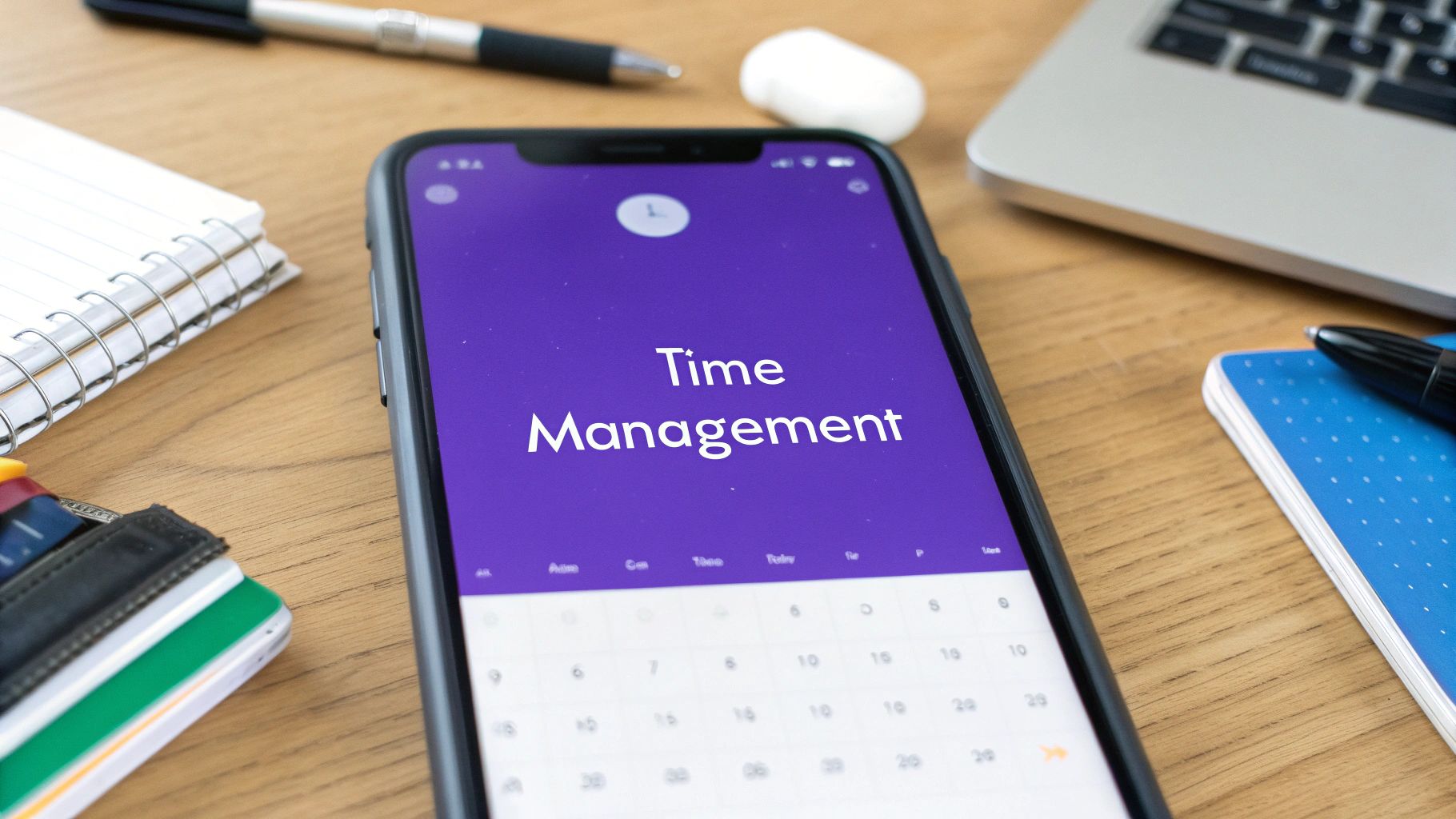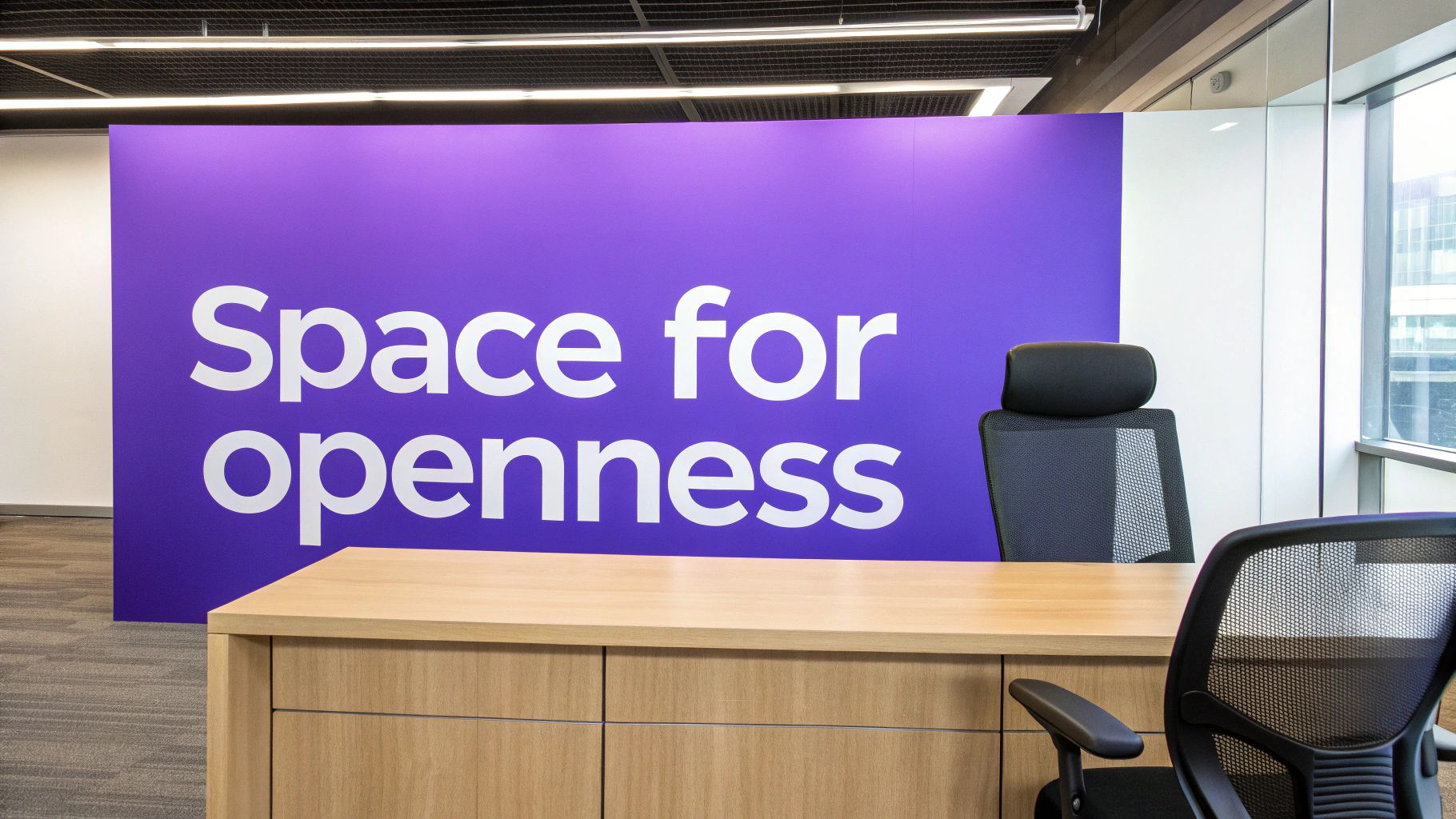Understanding the True Power of One on One Meetings

One on one meetings form the foundation of great manager-employee relationships. These focused conversations create space for personal connection, open dialogue, and building trust. When done right, they help both managers and team members share challenges, exchange ideas, and work together on solutions.
Why Traditional Approaches Fall Short
Many one on one meetings end up as basic status updates, missing their real potential. When meetings focus only on tasks and deadlines, they fail to address what matters most – the human element. This can leave employees feeling disconnected and prevent meaningful growth.
Take a typical scenario: A manager spends the entire meeting reviewing project timelines, never asking about challenges the employee faces or their career goals. The employee leaves feeling unheard and undervalued, which affects both their work quality and engagement.
Standard meeting formats often ignore that different people have different communication styles and learning preferences. Using the same rigid approach with everyone can make team members hesitant to share their thoughts openly.
Research shows the impact of effective one on ones: Employees who have regular meetings with their manager are almost three times more likely to be engaged. These conversations help spot problems early, ensure clear communication, provide feedback, and strengthen relationships. Learn more about best practices for one on one meetings here.
Making One on One Meetings More Effective
Smart managers are rethinking how they approach one on one meetings. The key is creating a clear structure while staying flexible enough for honest dialogue. By truly listening and having meaningful discussions, managers can better understand their team's challenges and help them succeed.
- Focus on Growth and Development: Talk about career goals, give helpful feedback, and find ways to build new skills
- Encourage Two-Way Communication: Create a safe environment where employees feel comfortable sharing thoughts and concerns
- Solve Problems Together: Work as a team to tackle challenges and create action plans
- Build Strong Relationships: Develop genuine connections based on trust and mutual respect
When done well, these meetings boost team spirit, increase engagement, and help create a culture of continuous improvement. They help align individual goals with company objectives, giving everyone a clear sense of purpose and direction.
Mastering the Art of Meeting Frequency

Getting one-on-one meetings right requires finding the perfect balance in how often to hold them. Meeting too frequently can feel like a hassle, while meeting too rarely makes it hard to stay connected and deal with issues quickly. Let's explore how to set up a meeting schedule that works well for you and your team.
The Impact of Cadence on Team Performance
The timing of one-on-one meetings shapes how teams communicate and progress. Weekly meetings help solve problems quickly and provide consistent support through regular check-ins. But without clear goals, these can turn into basic status updates. Monthly meetings allow for deeper strategic discussions, though smaller issues might grow larger between meetings.
Your meeting schedule needs to match your specific situation – there's no universal solution. You'll want to consider your team dynamics, individual needs, and current projects. Recent studies show most companies prefer either weekly or monthly check-ins. In fact, 38% of employees meet with their managers weekly, while 19% meet monthly. For more details, check out this research on meeting frequency.
Finding Your Team's Optimal Rhythm
Here are key things to think about when deciding how often to meet:
- Team Experience: New teams or those going through changes may need more frequent meetings to build relationships and handle challenges. Well-established teams often do fine with fewer, more focused meetings.
- Individual Needs: Some people benefit from regular guidance, while others work better independently. Adjust your meeting frequency based on what works for each person.
- Project Phase: During busy project periods, meet more often to stay aligned and clear obstacles. When things are calmer, you can space meetings out more.
Adapting Frequency in Dynamic Environments
Your meeting schedule shouldn't stay fixed. Be ready to change it as your team's needs shift. During high-stress times or company changes, more frequent meetings can help provide stability and clarity. Team members can voice concerns and get the information they need to stay focused.
As teams gain experience and projects become more stable, you might reduce meeting frequency. This shows trust in the team while still keeping regular conversations going about strategy and feedback.
Addressing Scheduling Challenges
Setting up regular one-on-one meetings can be tricky when everyone's calendar is full. But making these meetings a priority shows you value employee growth and good communication. You can overcome scheduling hurdles by using calendar tools, being flexible with timing, and committing to consistent meetings. This practical approach helps build stronger connections between managers and team members.
Crafting Conversations That Drive Real Results
One on one meetings are much more than routine check-ins. They provide key opportunities to nurture growth, strengthen relationships, and produce tangible outcomes with your team members. Moving past basic status updates allows you to tap into each person's potential through focused dialogue. Success requires proper preparation, engaged participation, and genuine investment in professional development.
Creating a Foundation for Meaningful Dialogue
The core of productive one on ones starts with psychological safety. Team members need to feel they can share openly without judgment – whether that's honest feedback, pressing concerns, or innovative ideas. Similar to how Quakers create space for deeper sharing in "After Thoughts" (Learn more about Quaker practices), effective one on ones require dedicated time for candid communication. Practicing active listening and responding with empathy helps establish the trust needed for open discussion.
While organic conversation flows naturally, light structure keeps meetings on track. Think of it like a good conversation – there's a natural give and take, but also a purpose and direction guiding the discussion forward.
Structuring Your One on One Meetings for Success
A balanced one on one meeting includes these key elements:
- Check-in: Begin with a personal connection to understand your team member's current state of mind
- Progress Review: Briefly cover key projects and tasks, focusing on removing roadblocks
- Growth and Development: Discuss career goals, share feedback, and identify learning opportunities
- Action Planning: End with clear next steps for both parties to ensure follow-through
Managing Difficult Conversations with Confidence
Challenging topics require extra care and preparation. When giving constructive feedback, focus on specific behaviors and their impact. Instead of "Your work is falling behind," try "I noticed the last two project deadlines were missed. What support do you need to stay on track going forward?"
The Importance of Cadence and Meeting Types
Meeting frequency should match team and individual needs. Some benefit from quick weekly 30-minute check-ins focused on immediate priorities. Others do better with longer bi-weekly or monthly sessions for deeper strategic discussions. Read more about finding the right meeting cadence here. The key is establishing a consistent rhythm that works for your specific situation.
Maximizing Impact in Remote and Hybrid Settings

Remote and hybrid work has made one-on-one meetings more important than ever before. What were once occasional check-ins have become essential touchpoints for keeping teams connected and productive. This shift requires managers to adapt their approach to ensure these vital conversations remain meaningful, even when meeting virtually.
Recent data shows that professionals now have an average of 5.6 one-on-one meetings per week – a 500% jump from pre-2020 levels. You can find more details about this trend here. These numbers highlight why getting these meetings right is crucial for today's workplace.
Using Tech Tools Effectively
While video calls and collaboration tools help bridge the physical gap, success depends on how we use them. The goal is to make technology support rather than get in the way of real human connection.
Make video the default for one-on-ones to pick up on facial expressions and body language. Keep shared documents for tracking discussion points and next steps. This combination helps maintain personal rapport while ensuring clear follow-through.
Creating Personal Connections Online
Building relationships remotely takes extra effort but is well worth it. Start each one-on-one with a brief personal check-in before diving into work topics. Taking just a few minutes to connect on a human level makes a big difference.
Pay attention to how each team member prefers to communicate. Some people feel most comfortable on video, while others may do better with chat or phone calls. Adjust your style to help everyone feel at ease and engaged.
Handling Tech Issues With Grace
When technical problems pop up (and they will), stay calm and have a backup plan ready. A quick switch to a phone call can keep the conversation moving if video fails. Some light humor about tech troubles can help ease any tension.
Test your audio and video before important meetings to catch issues early. Make sure everyone has the right equipment and internet setup for quality calls. A bit of preparation helps avoid frustrating disruptions.
Making Meetings Count for Everyone
Each one-on-one should create real value for both participants. Focus on specific goals, progress updates, and problem-solving. Move beyond basic status reports to have meaningful discussions that drive action.
Set aside time to talk about career growth and give constructive feedback. Show you're invested in helping team members develop and succeed. Regular check-ins on goals and support needs help keep everyone motivated and heading in the right direction. This focused approach leads to better outcomes for individuals and teams.
Measuring and Maximizing Meeting Success

Getting real value from one-on-one meetings requires looking beyond just how the conversation feels. While maintaining a personal connection is essential, having a clear way to measure impact helps ensure these meetings truly benefit both individuals and teams. Here's how to evaluate and improve your one-on-ones without losing the human element.
Quantifying Meeting Effectiveness
One key way to assess one-on-one meetings is through participation and engagement. Notice whether team members actively share ideas, ask questions, and bring up concerns. High engagement often signals that people feel safe and trusted. Watch for improved teamwork and communication between meetings too – this suggests the one-on-ones are strengthening work relationships.
You can also track concrete outcomes. Have team members made progress on projects after discussing roadblocks? Are they achieving personal goals that were set during these meetings? These practical results help show whether the conversations lead to real improvements.
Tracking Progress and Maintaining Connection
Smart managers find ways to monitor progress while keeping meetings genuine and personal. Many use basic tools like shared docs or project trackers to follow up on action items. This creates clear accountability between meetings. The key is balancing structure with authentic connection – making space for open dialogue and showing real care for team members while still keeping track of commitments.
Gathering Feedback for Continuous Improvement
Regular feedback helps make meetings more valuable over time. Consider quick, anonymous surveys asking team members to rate meeting usefulness and suggest improvements. Create opportunities during the meetings themselves for people to share what's working and what could be better. When everyone has input on the meeting format and content, they're more invested in making them successful.
Learning From Top-Performing Teams
The best teams use meeting data wisely. They look at engagement levels and results to understand what drives success. If they notice lower project momentum after changing meeting frequency, they adjust. This practical approach helps optimize meetings while preserving the personal connections that make them powerful. Data serves as a tool to enhance, not replace, meaningful human interaction in one-on-ones.
Navigating Common Challenges and Pitfalls
Having productive one on one meetings is key for building strong teams, but several common challenges can get in the way of these important conversations.
Overcoming Scheduling Conflicts
Busy calendars often lead to cancelled one on one meetings. Here are practical ways to keep meetings on track:
- Lock in Regular Times: Put recurring meetings on the calendar to make them a consistent priority
- Be Flexible with Duration: Short, frequent check-ins often work better than long, sporadic meetings
- Use Smart Tools: Take advantage of scheduling apps to coordinate times and send reminders
Managing Resistance and Engagement
When team members seem hesitant or checked out, try these approaches:
- Start with Personal Check-ins: Begin by asking how they're doing and what's on their mind to make the conversation relatable
- Ask for Input: Create easy ways for employees to suggest improvements to meeting format and topics
What Causes Resistance and How to Address It
| Common Concerns | Helpful Solutions |
|---|---|
| Lack of Interest | Connect meetings to their personal goals |
| Hesitant to Share Openly | Build trust and ensure private conversations |
| Meetings Feel Unproductive | Show clear outcomes and progress from talks |
Making the Most of Limited Time
When schedules get tight, stay focused with these tips:
- Target Key Topics: Discuss the most pressing items and growth opportunities first
- Have Clear Goals: Know what you want to accomplish in each meeting
Creating Equal Dialogue
Building balanced conversations requires care and structure:
- Make Feedback Two-Way: Help employees feel comfortable sharing honest input
- Ask Open Questions: Use questions that encourage detailed responses rather than yes/no answers
Just like Bulby helps teams collaborate remotely, your one on one meetings should give everyone a voice. Using a thoughtful approach and helpful tools like Bulby, you can turn meeting challenges into chances for better communication and team growth.
Want to make your one on one meetings more effective? See how Bulby can help your team work better together.

